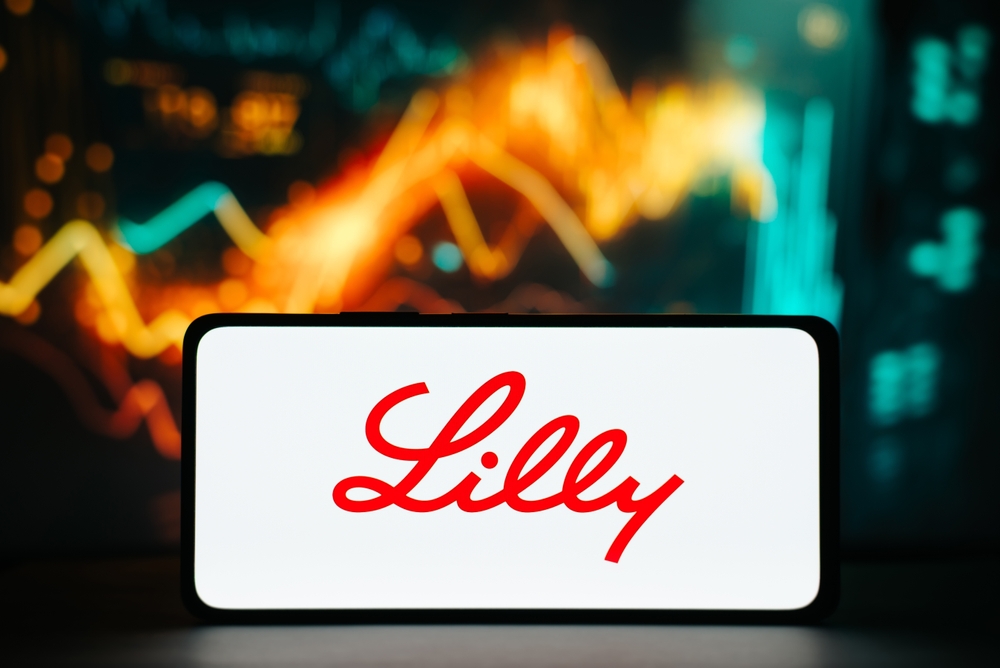Eli Lilly posted a mixed earnings report for the fourth quarter, with strong demand for its blockbuster weight loss drug Zepbound and diabetes treatment Mounjaro driving revenue growth. However, sales slightly missed expectations due to lower realized prices for Mounjaro. Despite this, the pharmaceutical giant reaffirmed its 2025 profit and sales guidance, maintaining confidence in its long-term outlook.
Q4 Earnings Beat Expectations, But Revenue Falls Short
Eli Lilly’s earnings per share exceeded Wall Street forecasts, while revenue came in just below analyst estimates:
- EPS (Adjusted): $5.32 vs. $4.95 expected
- Revenue: $13.53 billion vs. $13.57 billion expected
Fourth-quarter revenue rose 45% year-over-year to $13.53 billion, while net income more than doubled to $4.41 billion, compared to $2.19 billion in the same quarter a year ago.
Weight Loss and Diabetes Drugs Drive Growth
Eli Lilly’s flagship weight loss and diabetes drugs remain key growth drivers:
- Mounjaro: $3.53 billion in Q4 sales, up 60% YoY (vs. $3.62 billion expected)
- Zepbound: $1.91 billion in Q4 sales (vs. $1.98 billion expected)
Despite missing estimates, demand for these drugs remains strong, with U.S. supply still trailing demand. Both treatments work by mimicking gut hormones that regulate appetite and blood sugar.
Eli Lilly attributed lower-than-expected Mounjaro revenue to favorable rebate and discount adjustments in the previous quarter. However, the company expects production to ramp up, with at least 1.6 times the number of incretin doses available in the first half of 2025 compared to the same period in 2024.
Expanding Manufacturing Capacity
With demand for incretin-based drugs surging, Eli Lilly and rival Novo Nordisk have invested billions to scale up production. The FDA reaffirmed in December that the U.S. shortage of tirzepatide—the active ingredient in Zepbound and Mounjaro—has ended.
The increased supply should help Eli Lilly capitalize on strong demand in the coming quarters.
Older Diabetes Drugs Also Outperform
Eli Lilly’s older diabetes drugs also delivered strong Q4 results, with Jardiance significantly beating expectations:
- Jardiance sales: $1.20 billion (vs. $901.5 million expected), up 50% YoY
The boost included a one-time $300 million benefit from an amended collaboration with Boehringer Ingelheim.
Retatrutide and Orforglipron: The Next Big Moves?
Eli Lilly is preparing to release late-stage clinical data on retatrutide, a next-generation obesity drug that mimics three hunger-regulating hormones: GLP-1, GIP, and glucagon. The data is expected later this year, ahead of schedule.
Additionally, Eli Lilly is set to unveil results for its experimental obesity pill, orforglipron, by mid-2025. If successful, the drug could strengthen its dominance in the weight loss market.
Conclusion
Eli Lilly’s Q4 results highlight both strong demand and lingering challenges. While its blockbuster weight loss and diabetes drugs continue to see high demand, pricing adjustments and supply constraints have weighed on revenue. With retatrutide and orforglipron on the horizon and increased production capacity, the company remains well-positioned for future growth.







